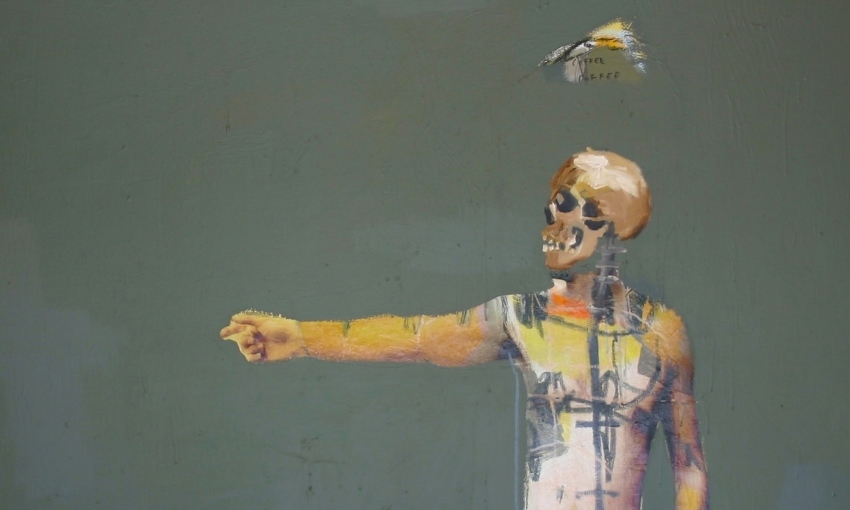With a body of neo-expressionist work discussing humanity's future on the verge of the Milky Way, it's no surprise that Harry Thring's journey as a visual artist will take him to distant locales; as far as the Arctic Circle.
Art in the Arctic: Harry Thring sets sail
Harry’s career as an artist has been something of a slow burner; a fan of art throughout school, Harry nevertheless decided not to pursue Art School after he finished. “I was sort of flirting with it but wasn’t brave enough, in the end, to drop everything and go to art school,” he says. “That’s a pretty gutsy move.”
Selected works of Harry’s are currently being exhibited at Paddy’s Lantern, 219 Gilbert St in Adelaide and can be viewed on his website.
Instead, Harry headed from his family home in Adelaide to the University of Canberra where he studied Sports Media, and since 2012 has been afl.com.au’s South Australian correspondent. And why not? Football may well be in his blood. His brothers are SANFL players: George, a defender and Max, a midfielder, both play for the North Adelaide Roosters.
But still, a love of visual art dogged Harry.
“I sort of kept painting, I dunno. It was just something I felt like I wanted to do, I can’t really explain why,” he laughs. “But without being too dramatic; I felt a need to do it, to get it out.” So Harry pursued dual careers, as a Sports Journalist and a Visual Artist. Rather than a hindrance, he credits his career as a sports journalist with un-commercialising his work, allowing him to paint to his own deadlines and cover subjects and themes that interest him.
Harry’s artistic style is reminiscent of the works of Jean-Michel Basquiat; filled with raw, neo-expressionist energy. His canvasses are a mixture of watercolours, collage, acrylic, stencils, and spray paint. “It’s pretty spontaneous like that – it’s instinctive, which often means reworking sections to reach a point that documents the journey,” he says.
More than anything, Harry finds inspiration in the conflict his life seems to provide. “Working in that industry, Monday to Sunday, all the time, and you’re in that headspace a lot of the time as well, it does create a fair bit of angst or conflict,” he says. “A lot of the art that I do is quite philosophically driven, and battles between philosophies, as well, with having to think in one way – so I guess that helps drive that conflict within, you know, gives you something to paint about.”
Heliopause, Harry’s exhibition at the Tinning St Gallery in Brunswick earlier this year, covered much the same themes. The furthest limit of our sun’s cosmic influence – the heliopause is often considered the final boundary between our own local solar system and the void of interstellar space.
“Cosmic forces are so monstrous, almost unimaginably so, yet the heliopause seems so fragile and delicate,” says Harry. “I guess it’s referring to where I am in my life, but more so where we are – humanity appears delicately balanced, as if we’re arriving or have arrived at a cross road.”
Though no further afield than the threshold of our wider galaxy, Harry nonetheless has an astounding journey in store; in October 2015 he’ll be travelling to the Arctic Circle, spending a three week ‘residency’ sailing around frozen archipelagos in a converted sailing ship. The organisation sponsoring Harry’s trip, The Arctic Circle, has been helping send creatives to our planet’s northernmost reaches since 2009.
The size of the quarters will make painting Harry’s usual canvasses impossible, but he says recording the Arctic’s eerie isolation through sketching and photography will inform his work after he returns. “It’s linked to the ideas that I’m working with, in terms of where humanity’s going. The Arctic’s primitive, but at the same time its demise gives it a futuristic element – I’m so excited.”






